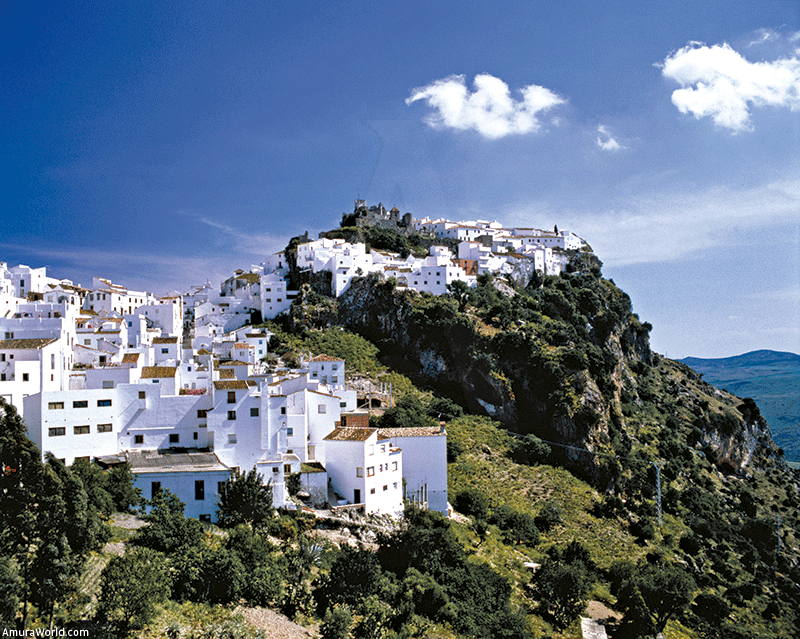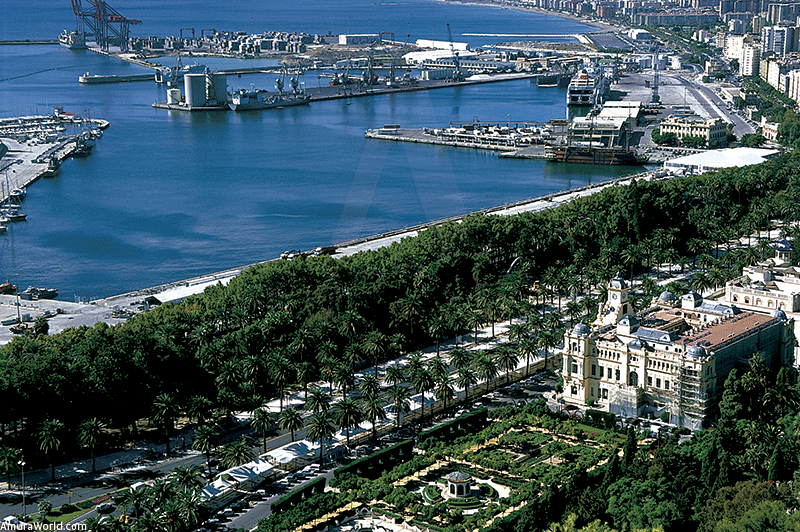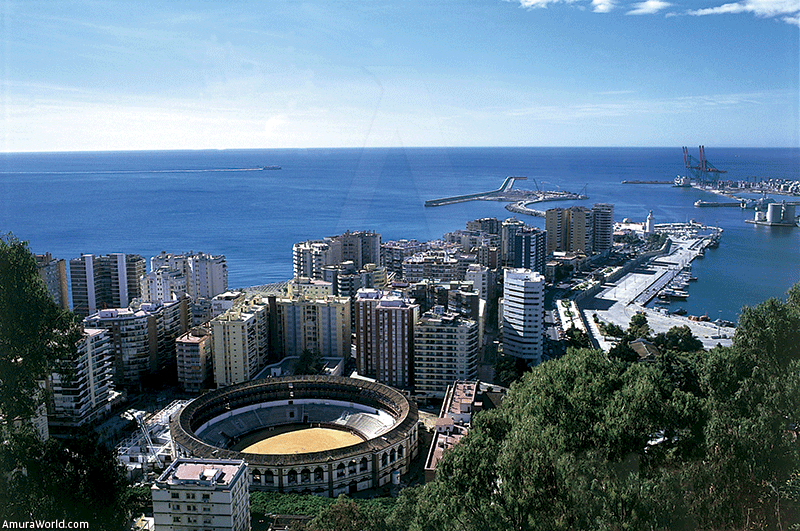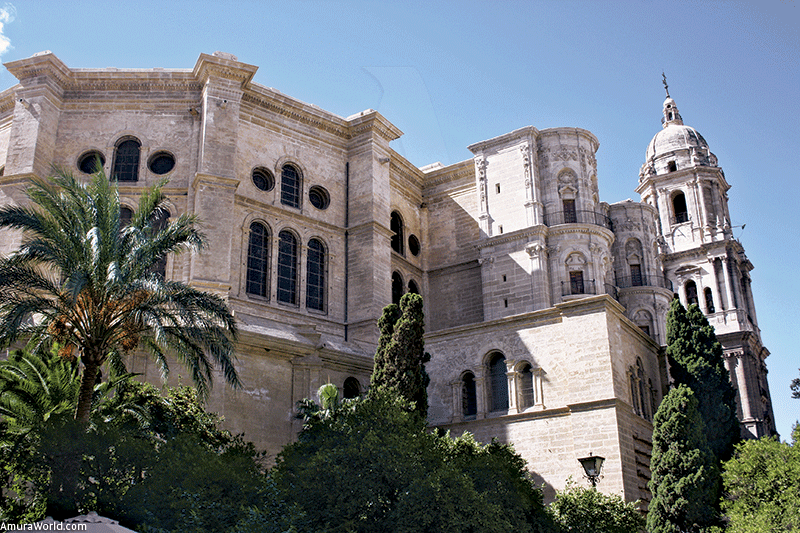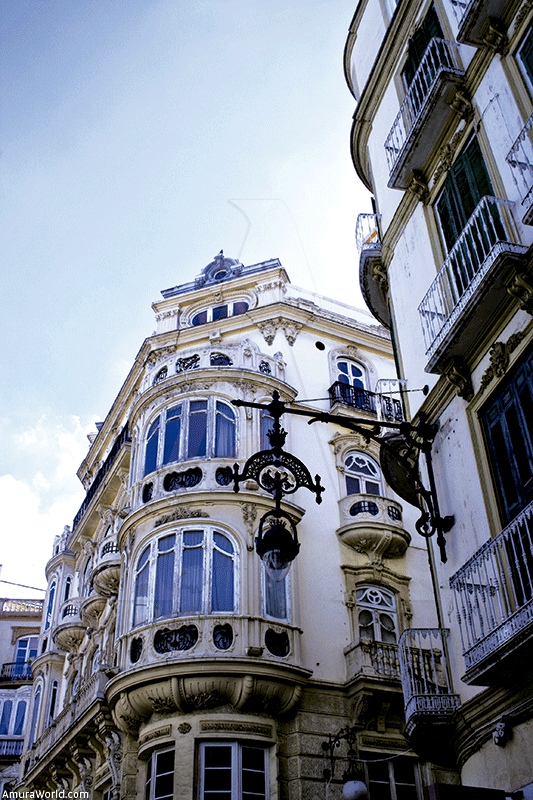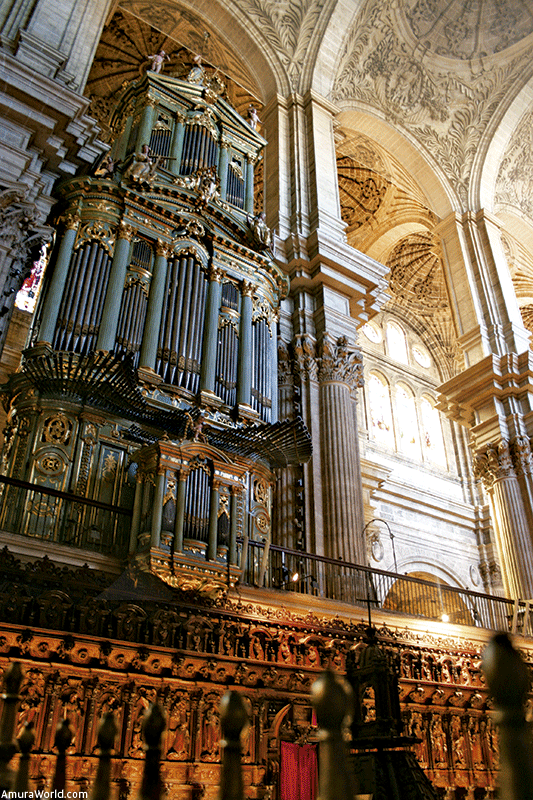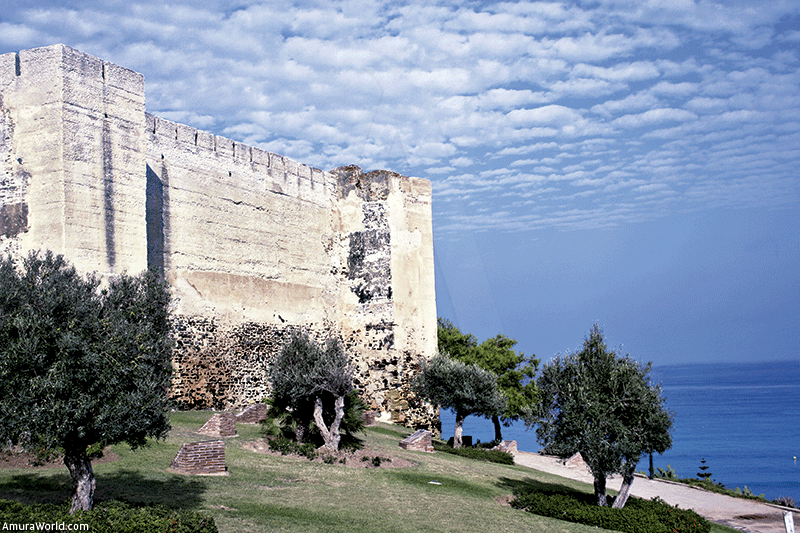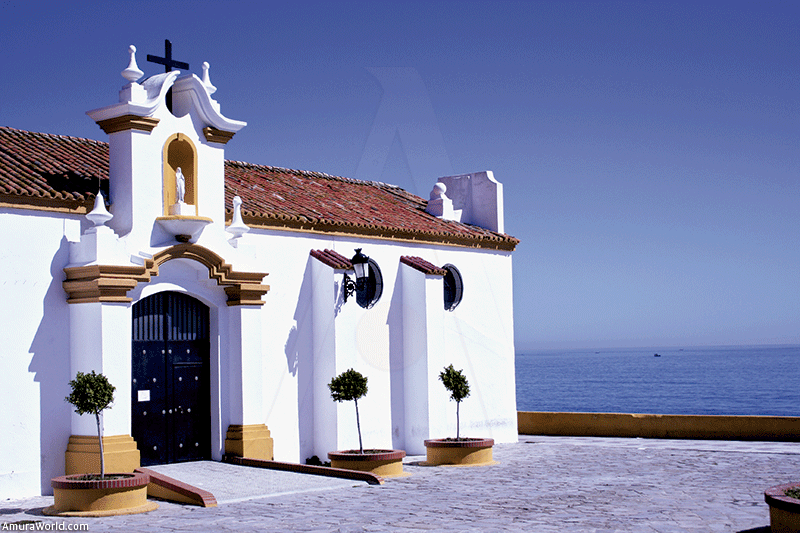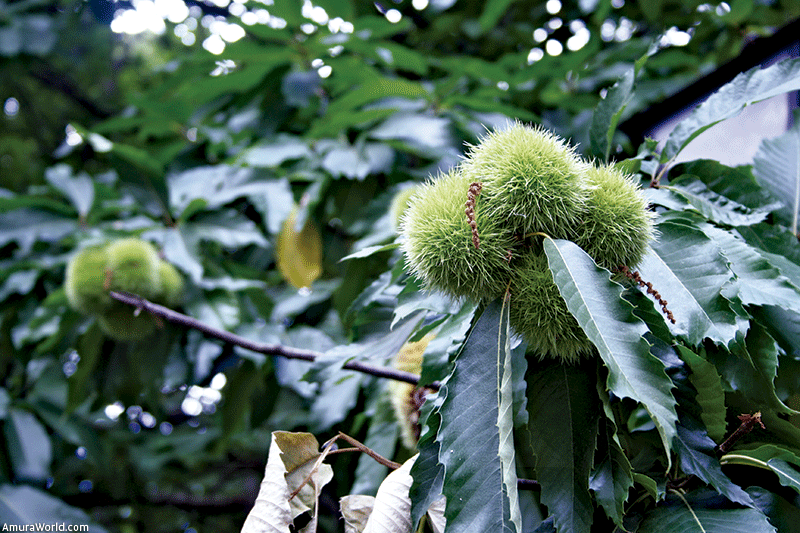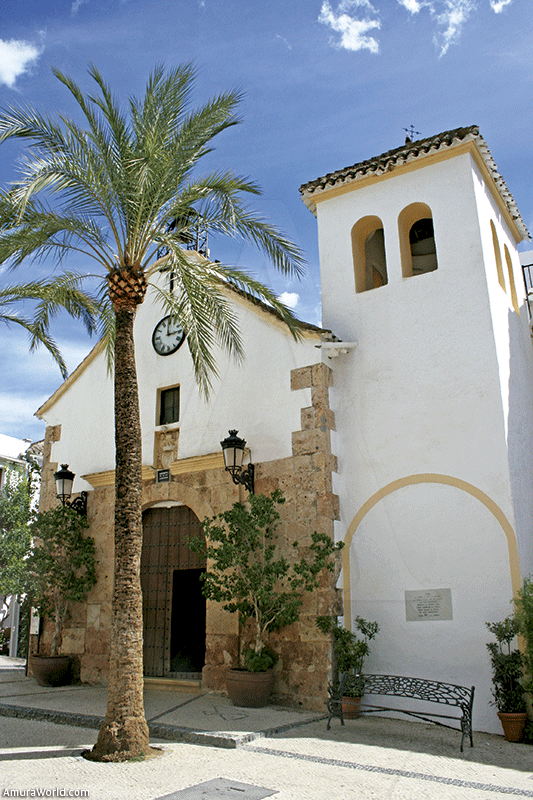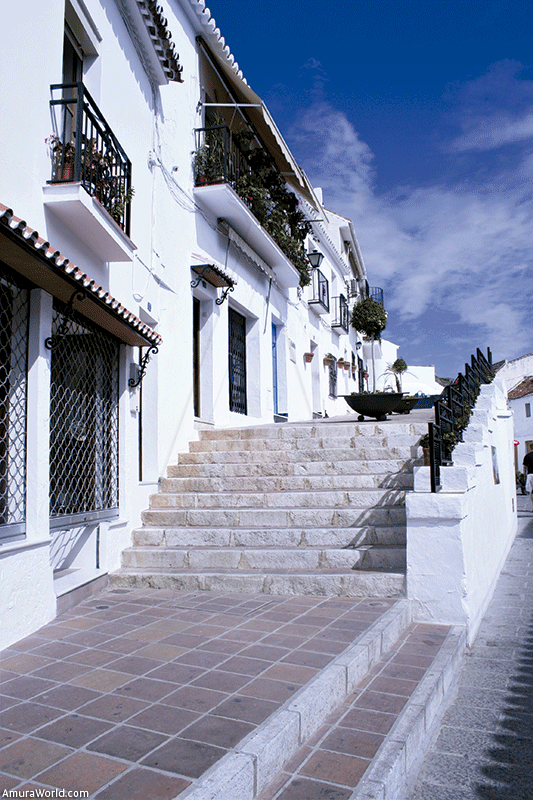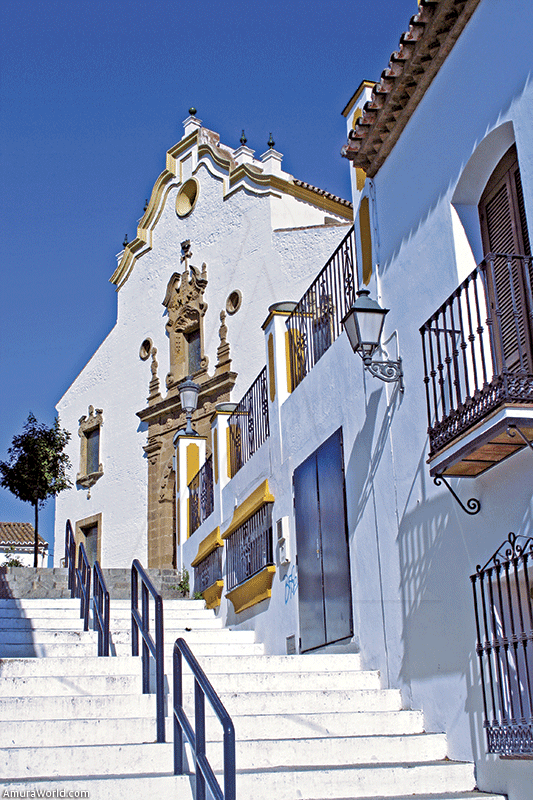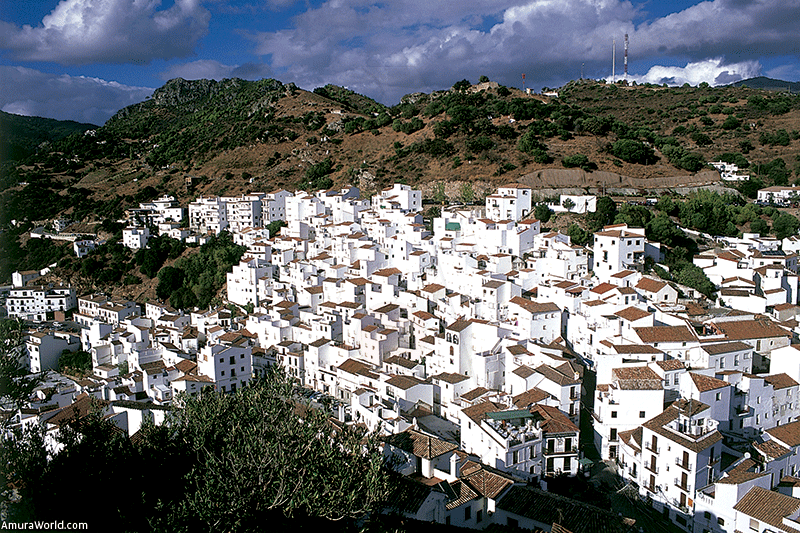From Málaga to Gibraltar
On the coast of Andalucía the Moors established strongholds from which they watched the horizon and allowed no invader to come near. Merchants were welcomed and Málaga was the entryway of the precious merchandise that arrived from North Africa and the Middle East.
In the mountains, the Pueblos Blancos —the White Towns—welcomed the serene light of the Mediterranean. The gardens of the Alcazaba of Málaga received important people in times when the Al Andaluz kingdom, thanks to its wealth, elegance, wisdom and knowledge of medicine, astronomy and navigation, dominated this part of the world.
Nowadays, the Costa del Sol, which boasts 300 sunny days a year, is one of the most popular regions on earth and a place crowded with the famous during the summer. It has 11 international sports ports, such as Benalmádena, Banús and Marbella, which are packed with the most beautiful yachts and the flashiest cars and where the most extravagant parties take place.
The nights in Marbella are eternal, the hillside mansions dazzle with luxury and security and the beach clubs shelter elegant women. There are 30 golf courses, considered the best in Europe, the towns become lively with parties and invite visitors to explore their white, desolate streets where the shadows spread themselves on the whitewashed walls.
Málaga
The view is superb from the top of the Gibralfaro Castle, that immense fort that crowns the hill. The walls descend along the hill, protecting the extensive Alcazaba, built between the eighth and 11th centuries, where there was a palace the enclosed enchanting gardens and which, nowadays, houses the archeological museum. The walls make their way towards the city to enclose it within its walls. In that long ago time, each evening, when the song of the muezzin called every person to afternoon prayer, the doors were closed to ensure the safety of its inhabitants.
Gibralfaro is an invulnerable fort built in the eighth century. It guarded the city and the valley thus ensuring the protection of the port, which was very important for commerce since the time of the Phoenicians and Romans. Vestiges of its great Roman theater where discovered at the foot of this same hill.
Málaga is a city full of charm whose well-preserved, narrow streets vie in beauty with the amazing nooks and crannies of the small plazas and ancient buildings. When the preparation of our sailboat in the Club Real Mediterráneo of Málaga was ready we took the time to explore and appreciate it. It is a grand city with a rich past.
In its streets you can observe elegant buildings that date from the end of the 19th century, when Málaga became renowned for its production of a sweet wine that became all the rage. However, there are also more ancient buildings, which date to the time of the Moors and that feature a Moorish style, as well as the birthplace of Picasso, where the painter spent most of his childhood. Also outstanding is the Picasso Museum, which is located in the Renaissance style palace of the Counts of Buenavista.
The cathedral, built in 1528 on the foundations of the great Aljaba Mosque, presents a curious blend of styles and its high vaults divided in Arabian style domes, its beautiful chorus and carved stone that adorn the doors, are impressive. One of the two towers, known as “La Manquita”, was never finished, thus maintaining an asymmetrical appearance that further emphasizes its importance.
There are gardens that adorn the city and the churches are elegant, like the one dedicated to Santiago, of Gothic-Mudéjar style and that shelters the image of the Medinaceli Christ, which causes much fervor in the city; and the sanctuary of the Virgen de la Victoria, the patron saint of Málaga. The small plazas invite visitors to enjoy their mystery, the shops are entertaining and the tapas bars are filled with people that create a unique ambiance. The marina within the great port is marvelous, features all services and is located facing the ancient city.
Málaga features 29 sandy beaches and the one of Don Carlos is the most popular. The nights are never quiet, the terraces are always crowded and people come out to breath the fresh air, to chat or argue, one of the most popular sports of the locals. Tapas are ordered constantly and the bars, featuring flamenco shows, please tourists who, in them, find a taste of that which is authentic. The nightlife is a grand perpetual party.
From Málaga to Benalmádena
Sailing began with a warm, dazzling day in which the sky was joined to the sea with a color that tasted like glory. The wind was moderate, with a southeast direction, which facilitated our navigation. We passed the long San Andrés beach, which is to the south of Málaga, till we reached Guadamar, created by the mouth of the river that, at some point, must have carried a lot of water and which is now a place where northern Europeans spread out their towels to soak up the sun.
In the south is where an area of rocks and bays begins and were buildings rise up, creating scenery that livens up the whole coast without interruption until Gibraltar. After a pleasant sail, we passed Carihuela Beach in Torremolinos and its beautiful seaside promenade and finally our sailboat entered the marina of the sports port of Benalmádena and docked in our reserved place.
Torremolinos preserves streets of what was once a typical town of Andalucía and has many tapas bars, restaurants, flamenco shows, discos and shops. The city has become nicer now that it has renovated it seaside promenade, parks and green areas, the Pimentel Tower and the Molino de Inca, which remind us of its past.
We devoted ourselves to visiting the charming town of Mijas, which is 425 meters (1,394 ft) high and located on the slopes of the Alpujata Mountain, where the white houses gleam, the pleasant balconies are filled with colorful flowers and the steep streets make their way through this exquisite place that is established around its main plaza.
The town conserves its Islamic physiognomy, such as part of its walls and the donkey taxis that transport people around the town or to the Virgen de la Peña Hermitage. On the rock we discovered the olden part, where the Alcazaba was located and which is crowned with the beautiful Church of the Immaculate Conception, built in the 17th century on the ruins of the mosque and which preserves its Mudéjar artwork and its tower. It is located to one side of the enchanting square bullfighting plaza together with its bullfighting museum. .
In Benalmádena the Bil-Bil Castle, a modern building of Arabian style located on the edge of the sea, is outstanding and houses the archeology museum and the guard towers that date from the 18th century. To one side, Fuengirola offers over seven kilometers (4.3 miles) of beach that end at the foot of the 12th century Sohail Castle that, from the top of the hill, guards the crowded beaches.
The nights in Torremolinos are livened up by the bars, the casino and in the flamenco nightclubs that attract tourists. In this place, many continue to enjoy the night even when the sun appears on the horizon.
From Benalmádena to Marbella
With the same moderate wind, we continued along the coast and passed in front of Fuengirola, with its seaside promenade and sports port dominated by the castle. We found the rocky area of the Calaburra Tower, which protects the sports port of Cabopino, followed by a nudist beach of fine sand that lies at the foot of its dunes.
The series of beaches and coves are dotted with guard towers, such as those of Calahonda, De los Ladrones and Río Real. We passed by the exclusive Los Monteros development, where the best hotel of the Costa del Sol is located as well as its elegant beach club and finally entered the Marbella marina, one of the best in the area.
Frequented by movie stars, crowned heads and the European jet set, Marbella is a charming city where the vestiges of its Arabian past can be seen in the lively streets filled with restaurants and boutiques.
The Church of Nuestra Señora de la Encarnación dominates the ancient center that lies at the foot of the old Arabian castle. Its wall, within which its narrow streets are entwined and where the beautiful Plaza de los Naranjos, where City Hall (1568), the Santiago Hermitage (15th century) and the Casa del Corregidor, whose Baroque-Gothic-Mudéjar façade dates from 1552, are located, is impressive.
The Convent of the Santísima Trinidad shelters an impressive cloister. The San Juan de Dios Hospital dazzles with its carved stone portico, wooden door with the royal coat of arms and the Mudéjar roof of the chapel. The Palacio de Bazán is amazing since it was built in the 16th century over three Arabian houses and because it blends Renaissance, Gothic and Mudéjar elements.
The Santo Cristo Church is exceptional because of its façade of carved stone and the octagon shaped roof of its small chapel, which is covered in glazed tiled.
The nights create their own enchantment and, after spending the day on the beaches, the tapas bars allow you to enjoy the excellent harvest of the sea. The terraces become lively, everyone speaks loudly and music rises from every corner. Finally, when the sun sets, we reach our next docking harbor, the well-known Port Banús, where we observed the most fabulous yachts. A seaside promenade perfect for enjoying a life of leisure including the best restaurants and bars, all that is necessary to ensure a joyful evening.
We visited the Roman ruins of San Pedro de Alcántara, where we observed the interesting vaults and Roman steam baths and the ruins of a Paleochristian church of the third century with its stone baptism fount in the form of a cross.
We reached the Ermita de los Monjes, from where the view is superb. We explored the amazing town of Ojén, a White Town dripping on the slopes of the Sierra de Alpujata, where the steep streets lead to a central plaza where the church and the best restaurants are located. Finally, we reached the shelter of Juanar, in the heart of a pine forest, from where we hiked and explored the sierra.
Farther ahead, Monda and Coín are other treasures of the Sierra. Marbella is one of the best places in the world to play golf since it offers a great variety of the most beautiful and elegant courses.
From Port Banús to Estepona
The beaches of Playas del Negro and of Sol-Villacana are passed until reaching the beautiful Estepona Beach, framed by its flower-covered seaside promenade, guarded by its church with its elegant main entrance, and located on a cliff adorned with the white houses of the ancient center. This short sail allowed us to dock at the sports port of the Marina del Mediterráneo of Estapona, one of the most beautiful on the coast and protected by the lighthouse of Punta de la Doncella. Estepona is a stunning town and it is very pleasant to stroll along its streets.
In this way, we visited one of the most enigmatic and emblematic towns of the Sierra de Bermeja: Casares. In the heart of the high rocks, its beginnings go back to Roman times but its ancient center is of Arabian origin. Its narrow, intricate and steep streets have earned it its name since it is known as “the dangling town”.
It is under the dominion of the ruins of the Arabian castle that accompany the Encarnación Church, on a rock that overlooks the rest of the town, as if it was guarding and, surely, protecting it. The Convento de Capuchinos, the caves, the Cima de los Huesos, the Torre de la Sal and the birthplace of Blas Infante, father of the nation of Andalucía, are not to be missed. It is a White Town that transports us to the past.
From Estepona to Gibraltar
Along the length of the coast there are long beaches, coves, luxury hotels and urban areas. We passed San Luis de Sabinilla, the Marina of the Duquesa de Manilva, Martigina and the Playa de Chullera until we reached the elegant Sotogrande development. Here, we discovered the last wild nooks and crannies of the Costa del Sol, where there is no highway access and where there are gorgeous coves located at the foot of the hills, and sailed until we reached the beach of the Línea de la Concepción, a grand border town where there are long lines of cars waiting to enter Gibraltar. La Roca, its chapel of the sea, embellishes a beach of fine sand. This emblematic rock has belonged to England since 1713 and beautifies the Strait of the same name.
Tarik was the Arabian conqueror that sailed the Strait in the eighth century in order to conquer Spain, which was occupied for seven centuries, and he renamed it “Djebel Tarik”, the Mountain of Tarik, which, through the years, was deformed and became Gibraltar.
We rounded the point of Europe, entered the Bahía de Algeciras and docked in the marina of the great port of Gibraltar. Measuring 4.8 kilometers (2.98 miles) long by 1.4 kilometers (.89 miles) wide, the rock shelters a city packed with shops where the merchandize is duty free. An ancient Arabian castle, built in the eighth century, dominates the city and has a tower, a keep, which serves as a jail; the Siege Tunnels, that extend for over 80 kilometers (50 miles) and the St. Michael Cave, which was used as a hospital during World War II.
In Europa Point the monkeys roam freely. According to legend, when these monkeys leave so will the British. Which is to say never, because their food is guaranteed. A cable car takes visitors to the highest point, 450 meters (1,476 feet) above sea level, from where the view of the Strait, the bay and the Moroccan coasts is impressive.
The beauty of the Costa del Sol and its life of leisure are amazing. It is a place favored by the rich and famous of Europe, America and the Middle East. Its palaces rise up on the cliffs, fabulous yachts dock in its ports, the parties fill the pages of celebrity magazines and the coast is a whirlwind of social life.
Málaga and its towns conserve their authenticity, the streets forever preserve the life of Andalucía and the remains of its rich history invite visitors to take historic tours. Costa del Sol, Marbella is your star, Málaga is your mother and the White Towns dazzle in your sierra, where they are reflected in the blue sea framed by the perpetual celebrations that beat to a flamenco rhythm.
Text: Interiores Patrick Monney, Portadilla, RVG Images ± Photo: Interiores Patrick Monney, Portadilla, RVG Images.

